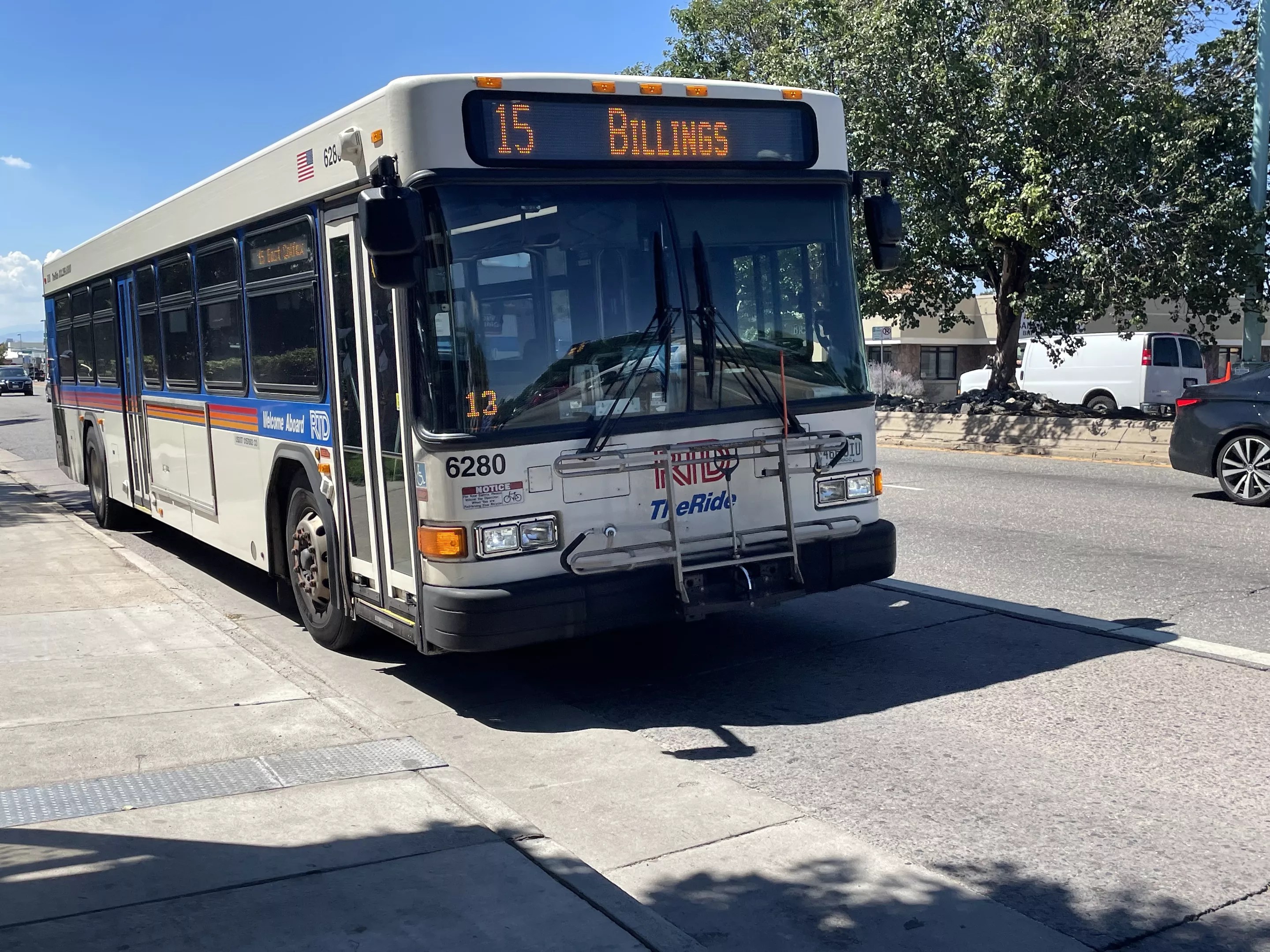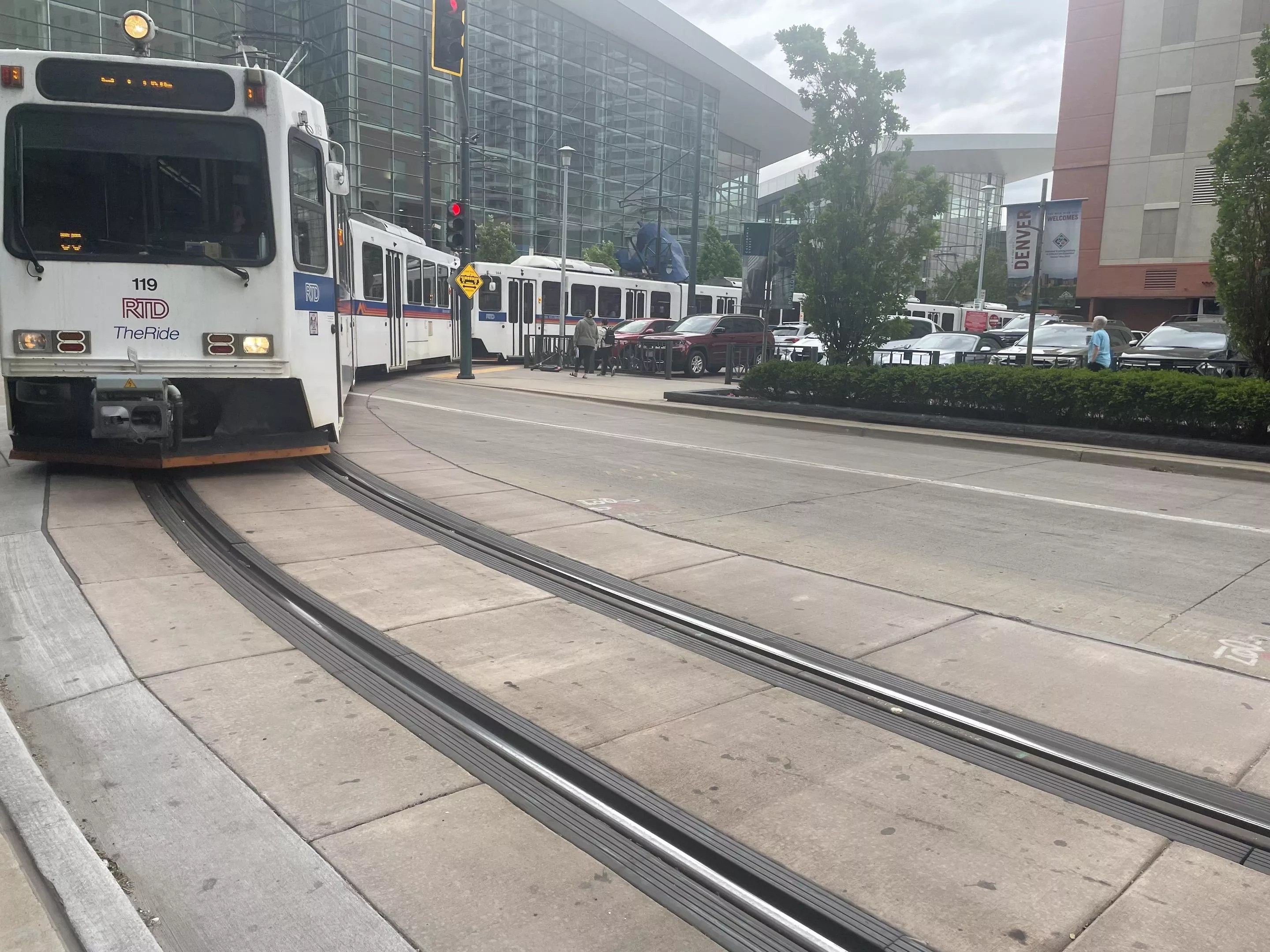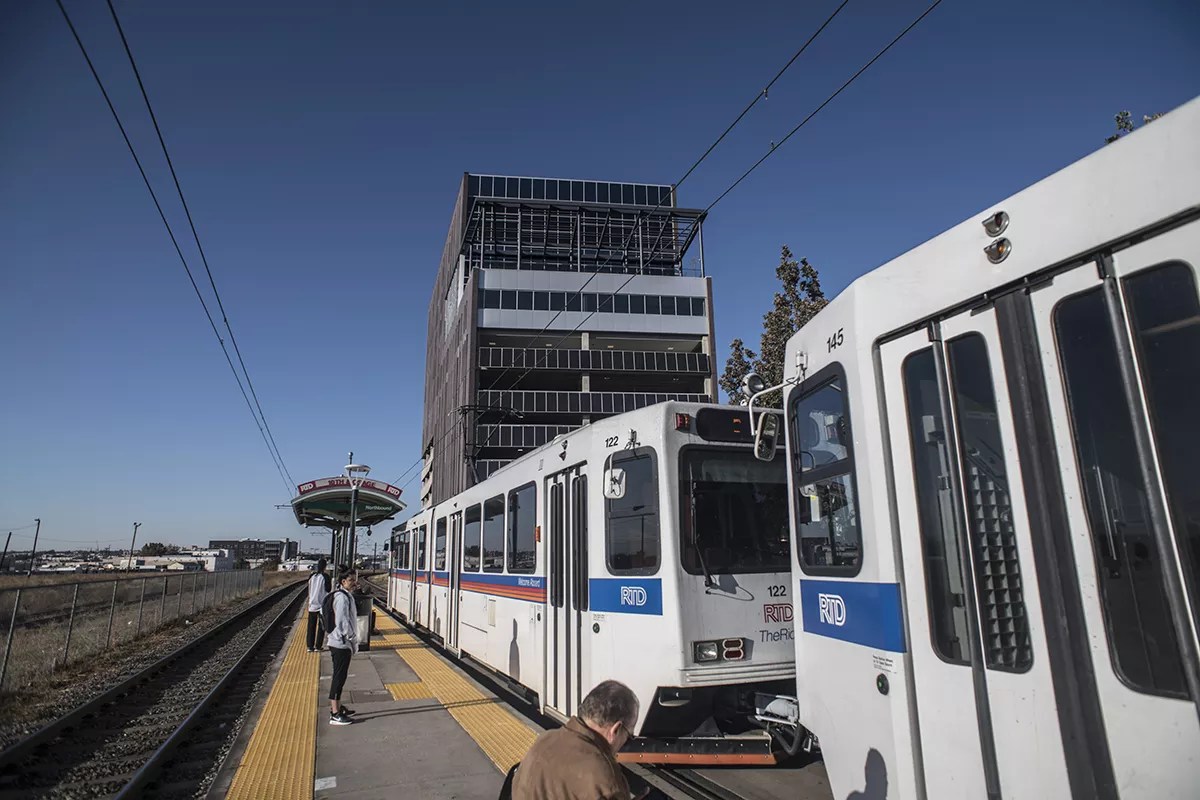
Catie Cheshire

Audio By Carbonatix
RTD has recorded slightly more boardings this year than in 2023, mainly because of an increase in bus passengers – which makes sense, since the transit system’s rail lines had a rough 2024, thirty years after the very first RTD rail line opened in downtown Denver.
Because of light rail slowdowns that still persist today, not everyone was celebrating that anniversary. But though RTD ran into plenty of bumps in the road in 2024, there were good moments, too. In January 2024, for example, the agency lowered fares for all customers for the first time in history.
The change was inspired by a year-long study that indicated fares needed to be simpler and more affordable. Fares are now $2.75 for every route except the light rail to Denver International Airport, which costs $10. Previously, fares were $3 for local trips and $5.25 for regional trips; an airport ride ran $10.50. Offerings for monthly passes and all of RTD’s discount programs were also decreased and simplified.
But just a few months into the year, RTD ran into trouble as the district took the first steps to redo the downtown light rail lines by implementing service changes that completely shut down the L Line from the end of May through September and rerouted the D and H lines to Union Station instead of their usual routes through the Central Business District.
This year, make your gift count –
Invest in local news that matters.
Our work is funded by readers like you who make voluntary gifts because they value our work and want to see it continue. Make a contribution today to help us reach our $50,000 goal!
The tracks had survived their promised lifespan of thirty years, but the agency says it needs to make upgrades for safety and continued operations. Over the summer, RTD took out the existing tracks and everything down to the utilities underneath them before building them back up to last another thirty years or more at five intersections. Next year, RTD will continue the project by working on the rail lines between intersections.
To add to the rail woes in 2024, RTD also restored coping panels (retaining wall caps) on its Southeast Corridor, which comprises twenty miles of track along Interstate 25 from Lone Tree to Denver on portions of the E, H and R lines; those restorations meant trains could only run on a single track. At the same time, RTD dealt with unexpected safety issues during work on the lines that the district had to repair, creating slow zones that currently still exist on the E, H, R and D lines, according to the RTD speed restrictions dashboard.
The rail slowdowns marred what should have been a celebratory time for RTD: the thirtieth anniversary of light rail operations in Denver, which came in October 2024. The first light rail line went all the way to Interstate 25 and Broadway from 30th and Downing streets in Five Points.

A project to update all rail lines downtown interrupted RTD service in the summer of 2024.
Catie Cheshire
Today, in addition to its bus system, RTD has ten rail lines, four of which (A, B, G and N) are heavier, faster commuter rail lines with larger seats, overhead storage and luggage and bicycle racks. Voters approved the now infamous FasTracks initiative in November 2004, which promised 122 miles of new commuter and light rail, eighteen miles of bus rapid transit, and more parking at rail and bus stations.
High costs have slowed the project – much to the frustration of voters, especially those who were sold on the prospect of a northwest rail line from Denver to Longmont. That rail line is only about 50 percent complete and runs to Westminster. The cost to finish the line was initially estimated at $4.8 billion, but has since inflated to over $6.7 billion. According to RTD, work on the line may not resume until at least 2035 unless there’s a change in funding.
And while FasTracks eventually plans to extend the L Line to meet up with the A Line to the airport, members of the Five Points community are tired of waiting; some see the continuing downtown rail reconstruction project as a chance to eliminate the L Line along Welton Street entirely. The L Line comprises a portion of the 1994 D Line, but instead of going anywhere, the route circles around California and Stout streets, from 15th to 20th streets, before heading back to Welton.
Members of the Five Points community believe that Welton, the main street of the historically Black neighborhood, should be a jewel of Denver, but development on the corridor is being held back by the light rail tracks on the east side of the street.
They’d prefer to use the train space to make the street a two-way road with more greenery and patio activation. According to RTD, ridership on the L Line in 2023 marked 314,000 boardings. That was by far the least-ridden light rail route that year, and with the route closed entirely for several months this year, the community isn’t feeling hopeful.
Preliminary 2024 RTD Ridership Numbers
RTD’s overall 2024 ridership numbers show a decrease in rail boardings in general.
According to RTD board briefing documents for December, which included unaudited numbers on ridership through October 2024, ridership is up 1.1 percent from 2023 numbers – but the increase is the result of bus boardings, while rail boardings have actually gone down.

RTD made small gains in bus ridership in 2024.
Evan Semón
Bus ridership was up 5 percent from October 2023 through October 2024, while light rail and commuter rail boardings were lower by 10.2 percent and 1.9 percent, respectively. The free services that RTD operates – the Free MallRide and the MetroRide, which the agency brought back briefly over the summer to make up for rail shutdowns – saw 6.9 percent fewer boardings than in 2023.
Since the COVID-19 pandemic began in 2020, RTD has worked to bring ridership back after a 46 percent decrease from 2019 to 2022. Before the pandemic, RTD had over 100 million annual boardings; in 2023, the agency marked 65 million in total. According to a Common Sense Institute Report on RTD that came out earlier this year, the agency needs to fix the perception that service is unreliable and unsafe to regain ridership numbers.
“Even if there’s no crime, if I perceive it’s not safe, we still have a challenge,” Kelly Brough, who wrote the report, told Westword. “It’s really clear we’ve got work to do in this space.”
At the time, RTD said that it is actively working toward what it calls a Welcoming Transit Environment to reduce the impact of criminal and code-of-conduct violations and show people it’s safe to ride.
According to RTD, its safety personnel strategy is evolving from a traditionally contracted security force to sworn officers. In 2019, RTD had nineteen sworn officers. Now it has over sixty officers, with a goal of getting up to 119 by the end of the year. These aggressive hiring moves have allowed officers to conduct more proactive work to reduce crimes, RTD said in a response to the report.
However, RTD faced problems with its safety initiatives this year as police chief Joel Fitzgerald was fired after speeding on the job, among other transgressions. Fitzgerald has now sued the agency, alleging that he faced racial discrimination on the job. And he’s one of several senior leaders who’ve left, citing CEO Johnson as at least part of the reason.
Despite the many complaints, voters affirmed the importance of RTD in November when they overwhelmingly approved Ballot Issue 7A, which made RTD’s exemption from the Taxpayer’s Bill of Rights permanent.
Because of TABOR, government organizations like RTD must refund unexpected tax revenue to taxpayers each year. For RTD, that would have required refunds of 7 to 10 percent of its over $600 million in tax revenue. Voters instead opted to let RTD keep the revenue in hopes that with enough funding, the agency can continue to grow and improve.
Guiding the RTD budget in the coming years will be a new set of directors, with seven of the fifteen RTD board seats electing new members in 2024; they’ll start serving in 2025.
Six candidates who won their races signed a pledge to fix RTD through a common-sense plan that centers on riders. Chris Nicholson, who won his race in District A, spearheaded the plan.
The pledge involves three sections: quality end-to-end, safety you can feel, and a schedule RTD can deliver.
The one thing the new board won’t have control over is Johnson’s contract and salary, which would have been up for debate in 2025. However, the current board just extended Johnson’s contract through 2027 and gave her a 5 percent raise, making her annual salary $421,878.
Johnson has a big task ahead of her in 2025: to keep RTD running and combat some of the negative public perception following the agency. With East Colfax Bus Rapid Transit construction now underway, she will be at the helm of yet another transformational, and disruptive, construction project in 2025.